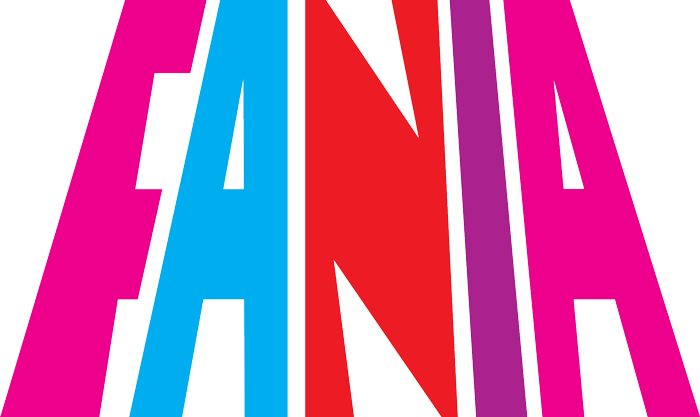
There is so much to the story of Harvey Averne and his career in music, that only a book – and I do hope that he writes his autobiography one of these days – could do it justice.
The summer of 2009 marks Averne’s 60th anniversary in the music business. At the age of 72, he is as enthusiastic and level headed about his involvement as ever. The scope of his career is remarkable. He began playing at hotels in the Catskills following the end of World War II. He won the first two Grammy awards in the newly formed Latin music category with his productions of classic Eddie Palmieri albums. He was also responsible for the first demo recordings of a youthful Madonna, and for signing her on her first record deal.
This compilation pays tribute to the short moment in Harvey’s life when he was a recording artist for the fledgling Fania Records. At the time, he made albums for the label while producing other people’s work and running the company on a day to day basis. In other words, he experienced the joys and frustrations of working for an independent label that was trying to stand on its own feet.
Born in 1936, Harvey grew up in Brooklyn, New York – which he describes as the toughest neighbourhood in the city. His father had migrated from Georgia, Russia. His mother was born in the U.S., and was of Polish heritage. Harvey’s early life was not easy – but his parents worked hard and managed to avoid poverty. At the age of ten, he began music lessons with his mother’s cousin, a violin teacher. He hated these lessons with a passion, and broke his violin, knowing that it was the only way that he would be allowed to stop.
His parents bought him an accordion, and he started lessons with the son of his father’s foreman. Much to his surprise, he had a natural talent for the instrument. “I started winning talent shows at the age of 12,” he recalls. “The big accordion and little Harvey playing ‘Lady of Spain’ was a winning combination. At 13, I was already playing sweet sixteen parties, weddings and Bat Mitzvahs. The following year I started to work away from home during the summers, at the Catskill Mountains. They wanted to pay the Harvey Averne Trio $7.50 per week, but my mother made them go to $15.”
Harvey would play the Catskill resorts over the next few years. But his music would experience a deep change, prompted by two separate but connected events: his father started working with some newly arrived Puerto Rican immigrants, and came home singing their Spanish songs. Back at the Catskills, while earning some extra money by cleaning the pool, Harvey saw a Hispanic dishwasher singing and playing his guitar under a tree. Talking to Ernesto “Chico” Alvarez for Latin Beat magazine, Harvey recalled: “There he was, with his shiny gold tooth, strumming and singing ‘Me Lo Dijo Adela’ and ‘Dónde Estabas Tú.’ I fell in love with those songs and their unique syncopation. I then talked to the owner of the hotel and convinced him to let Pedro go into the playhouse every night, so that we could play some ‘real’ Latin music. We were an instant hit. Pedro taught me how to play the tunes properly on my accordion. It was the first time that I played Cuban music.”
It was the start of Harvey’s career in Latin music. He assembled a group called Harvito and his Latin Rhythms, playing the hotels, as well as a residency at the Boulevard nightclub at Rego Park in Queens. “We were a good little Latin quartet, but played to a crowd that was almost exclusively Anglo,” he explains.
Renamed Arvito and his Latin Orchestra, the group took a step forward when Harvey took over the leadership of a troubled band formed by pianist Larry Harlow. With Harvey on vibes and Larry on piano, the new Arvito combo was a more complete outfit. Managed by top DJ Dick “Ricardo” Sugar, the group worked constantly, playing hotels, resorts and dances at the mecca of Latin music – the Palladium.
The band’s Palladium debut was alongside Tito Puente, whose songbook and arrangements were a prime source for the Arvito band. Harvey was extremely nervous. He asked Puente about the many tunes that he had copied from him. A generous man, Puente told him not to worry. “I have a lot of songs,” he said. “Just tell me which ones you are going to perform, and I won’t play those tonight.” “We became great friends,” recalls Harvey. “He remained a mentor throughout my career.”
The constant whirl of gigs continued throughout the ’50s and into the ’60s. Things would change in early 1964, when The Beatles conquered America. Suddenly, four-piece rock groups were the rage – and the Anglos stopped listening to Latin music.
There was still work, but Harvey concentrated on the day job that had occupied him since the beginning of the ’60s. He had invested in the construction trade, enjoyed success and made a fortune – he had his own, chauffeur-driven limo, a pad on the upper Eastside, and all the trimmings. By the end of 1966, however, he was disillusioned. The following year, he met Jerry Masucci through Larry Harlow.
“Larry told me that he had signed a contract with a new company,” he recalls. “He suggested that I meet this lawyer, Jerry, who owned the company together with Johnny Pacheco. I did, and Jerry told me that he needed someone to run the label for him. He wanted me to do it, working out of his law offices, and offered $300 a week. I laughed and told him that my chauffeur earned nearly that, to which Jerry replied: ‘I think that the chauffeur is gone if you take this job’. I thought about it for weeks, and eventually decided to accept. It was what I wanted to do. I felt like I was being paid to go to college.”
At Fania, Harvey worked on every aspect of the business. “Jerry chose not to interfere,” he explains. “He allowed me to learn by experience”. Even though he had never been in a recording studio before, Harvey began producing albums. He called Marty Sheller, who had played trumpet in the Arvito band and arranged hits for Mongo Santamaría and others. “He favored a mix of jazz, Latin and the blues,” he says, “I loved that sound.” Harvey produced important LPs like Ray Barretto’s Acid and Larry Harlow’s El Exigente. He also recorded his own material for the label.
It was the height of the boogaloo craze. With Sheller’s arrangements, the voice of Kenny Seymour Sr. (formerly of Little Anthony and the Imperials) and Harvey’s English lyrics (“I didn’t speak Spanish that well”), his recordings were a natural match for the boogaloo movement.
Harvey’s entrance into the recording world produced two 45 rpm singles. We have included two of those four sides – check out the lyrics of “Make Out” and “The Micro Mini,” backed by the boogaloo “go-go” sounds in the background.
These singles were the starting point for the Viva Soul LP – a record that was eventually released on Atlantic. Harvey felt that Fania’s contacts were too Latin oriented – and that his material was suited for a mainstream label. Music business hustler Jack Hook suggested that this was the kind of album that Jerry Wexler would like. He was right.
The following year, Harvey’s singles appeared on both Fania and the Uptite label that had been set up to push the label’s R&B material.
The first single was the phenomenal “Never Learned To Dance” – a club classic around the world that features the vocals of Seymour Sr. The LP The Harvey Averne Dozen was a glorious combination of Latin, soul, jazz and funk. The rhythm and melody of “Central Park” are equally infectious. “Gotta Do My Number” would not be out of place in one of Grant Green’s Blue Note sessions of the same decade. The music here is superb, featuring some of the top session musicians of the time.
Entitled Brotherhood, the following album was similar in style – but with a social message to boot, and covers of tunes by The Beatles and Sly and the Family Stone. Harvey had now become part of the Woodstock generation. “I took a bunch of us to Woodstock and rented a couple of hotel suites nearby,” he recalls. From the master tapes of the time, we have unearthed a previously unreleased version of The Beatles’ “Come Together” – John Lennon’s call to political arms from the Abbey Road album.
The Woodstock ideals would appear prominently on Harvey’s final album from this era – a rare collector’s item entitled Harvey Averne Barrio Band. “It was all about Santana,” says Harvey. “I loved what he was doing. We were a bit too Latin in our brains – we were hardwired. Santana, on the other hand, knew how to get the right mix.”
Not getting the correct mix was harmful in commercial terms – but not in artistic ones. The fusion of rock, soul and big Latin sounds is compelling, inspiring us to include three cuts from this album. Even more intriguing is the fact that the singers and musicians who appear here would later become the Fania All Stars – this is their first time together in a studio.
Harvey was starting to realize that he did not want to be an artist anymore. Slowly, he began to remove himself from the label.
Even though there was no explosive incident that ended it all, Harvey was upset by the events surrounding the success of Ralfi Pagán’s single “Make It With You,” from his second Fania LP. Through a chance meeting with Frankie Crocker, New York’s top R&B DJ at the time, Harvey had secured constant airplay for the record, as well as a deal with the Wand label to push it even further. He felt that Jerry Masucci embarrassed him with Wand during negotiations for the second single – and with the music director of the WWRL-AM station where Crocker worked. It was time to move on.
Harvey turned his back on his artistic career, but he would enjoy even greater success as producer and owner of his own Coco Records label. Fittingly, his recordings from the late ’60s and early ’70s are treasured by collectors.
We feel honored to be able to bring you the first anthology of those classic recordings.


